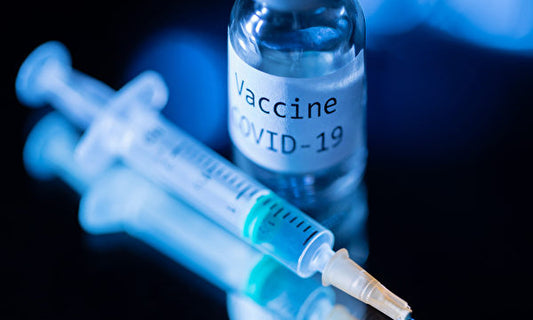Are You Brushing Too Hard? Signs You’re Receding Your Gums (and How to Stop)

Ever finished brushing your teeth only to see blood in the sink? Or noticed your gums slowly shrinking away like they’re waving a white flag? That might not be a coincidence. Gum recession might sound dramatic, but it happens more than you think—and your brushing habits could be directly receding your gums.
According to a 2020 study (Romandini M et al., J Clin Periodontol), 91.6% of Americans show signs of gum recession. That’s nearly everyone! While toothbrush type and bristle design matter, how hard you brush is the real villain in this story.
Let’s break it down—with what research, clinical trials, and a few dental professionals have to say.
The Brushing Pressure Problem: Too Much Force, Too Little Benefit
Back in 1996, researchers took a close look at how much pressure people actually use when brushing (Journal of Periodontology). The results? Shocking. Manual toothbrush users applied an average pressure of 273 grams — almost double that of most electric toothbrush users (who ranged from 96g to 146g). That’s a heavyweight match your gums never signed up for.
But here’s the kicker: higher pressure didn’t equal better cleaning. The study found no significant difference in plaque removal between users who brushed gently and those who went full-force. In other words, scrubbing harder doesn't get your teeth cleaner—it just beats up your gums.
So How Much Pressure Is Safe?
The Canadian Dental Hygienists Association (CDHA) issued a clear guideline in their toothbrushing position statement:
"Research suggests keeping brushing force under 150 grams to avoid gum abrasion and trauma."
That’s barely the weight of a small apple. To put it in perspective, 150 grams feels about the same as holding a deck of playing cards—just enough to feel some pressure in your hand, but not enough to mash down your toothbrush bristles. Anything more, and you risk damaging your gums and wearing down enamel. Electric toothbrushes (especially sonic ones) help here by doing the work for you—you just guide them.
And if you’re brushing for more than two minutes with pressure above that 150g threshold? A 2003 study found it won’t remove more plaque, but could do more harm (Effect of brushing force and time on plaque removal using a powered toothbrush).
Soft or Hard Bristles: Does It Matter?
Short answer? Not really.
We all know the American Dental Association (ADA) recommends soft-bristled brushes because they’re gentle on both teeth and gums. But research suggests a firm toothbrush cleans better than a soft toothbrush on average.
A 2011 study found hard manual toothbrushes could remove more plaque (Journal of Periodontology). Another 2007 study backed this up too, noting about 15.8% more plaque removal with hard bristles
But it's a risky game. In reality, most people end up brushing with more pressure than needed, which starts receding gums, like using a chainsaw when you just need pruning shears. So the problem isn't toothbrush type, it's still excess pressure when brushing.
What the Experts Say
Dr. Melissa Schorr, a U.S.-based dentist with over 20 years of experience, puts it simply:
"You don’t want to brush too hard because that can damage your gums."
She emphasizes brushing for a full two minutes and focusing on technique over brute force:
"Whether you’re using a manual or powered toothbrush, it’s really about brushing for two minutes."
Forget the flashy blue stripes in toothpaste or the firm grip of your brush. What matters most is keeping pressure light, angling your brush at 45 degrees, and brushing gently in small circles or short strokes.
The Power of a Gum Massage
Here’s something most people don’t do but really should: massage your gums. A 2020 study found that gentle gingival massage could significantly improve microcirculation in the gums—which is especially helpful in early-stage recession (Effect of physical stimulation on gingival microcirculation).
Dr. Ellie Phillips, a dentist with over 50 years of experience, recommends this simple routine:
-
Use a clean finger or soft toothbrush
-
Gently rub in small circles for a few minutes each day
According to Dr. Phillips:
"Gentle gum massage stimulates blood flow and promotes gum health. In early cases, it even helps tissue recover."
Boosting Your Routine: Consider Your Toothpaste
If you're serious about protecting your gums and keeping inflammation at bay, your toothpaste matters too. Unitein Toothpaste strengthens receded gums & soothes sensitive teeth, made with plant-based ingredients. It's a great choice for those trying to stop early signs of gum recession or simply want a more gum-friendly brushing experience.
Here’s your new gum-saving checklist:
Your gums aren’t training for a boxing match, so don’t treat brushing like a combat sport.
Your new gum-saving checklist:
- Use a soft-bristled toothbrush (manual or electric)
- Keep brushing pressure under 150g
- Angle your brush at 45 degrees
- Brush for 2 minutes, not 30 seconds
- Massage your gums daily for better circulation
Brushing hard doesn't make your teeth cleaner—but it might make your gums retreat. So lighten your grip, slow your pace, and treat your mouth like the VIP it is.
暫無評論







0條評論